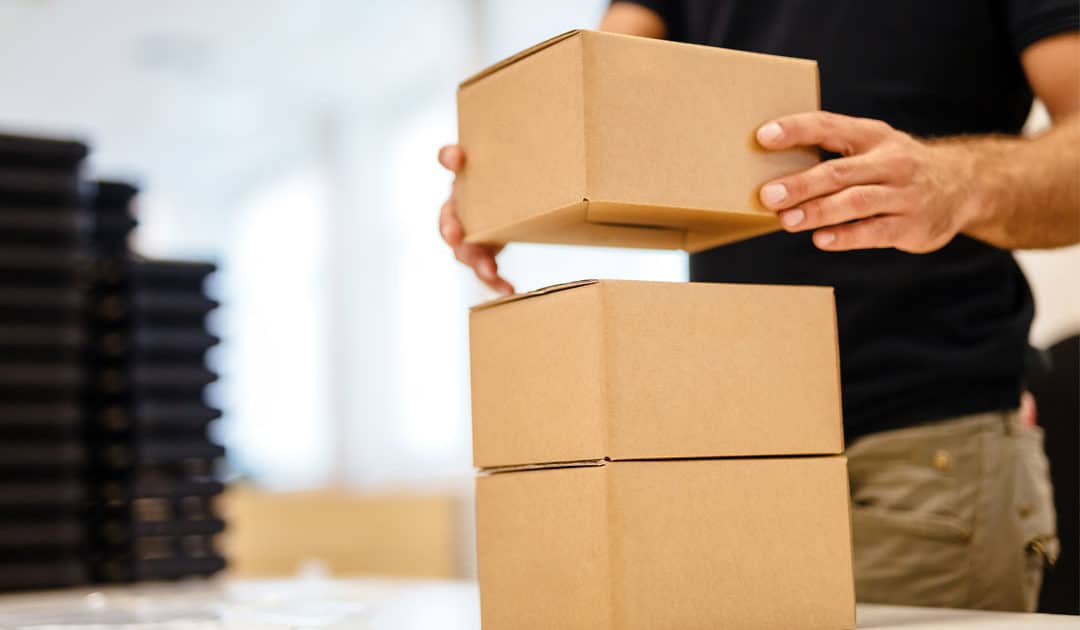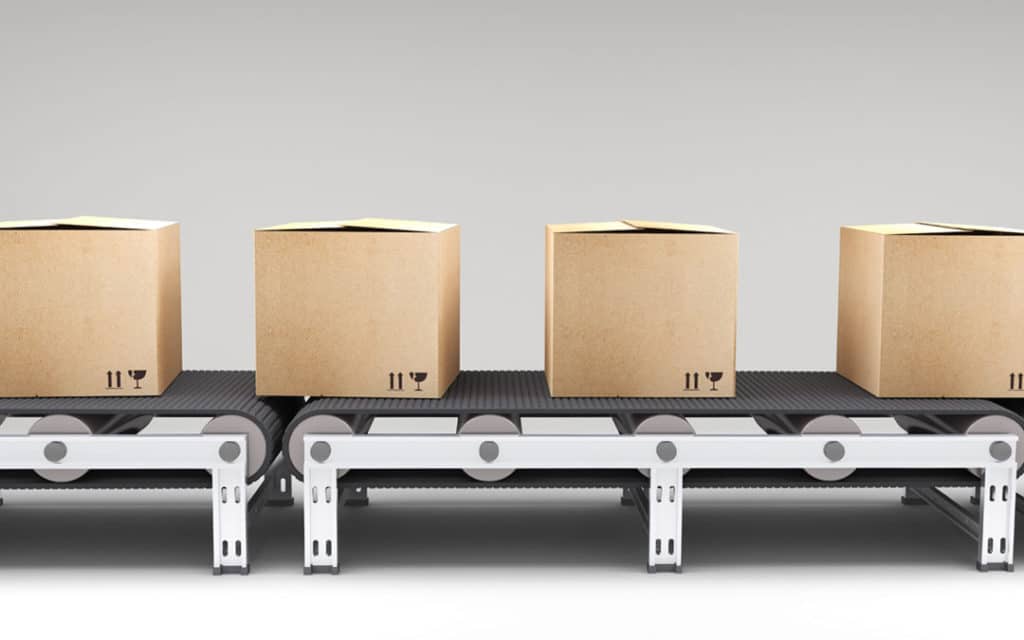Interested in a custom packaging solution? Looking for more information on our packaging products? Contact us by email, phone, or request a free quote below. We can’t wait to work with you.
How to Evaluate the Quality & Strength of Packaging

Being durable is the foundation of any good packaging. If you are purchasing packaging for the first time, you might be feeling overwhelmed by the wide variety of packaging options available to you.
After all, packaging is a key investment in your product. Without it, you may risk your product being damaged during shipping and disappointing your customers. Similarly, if you are considering purchasing packaging in bulk, knowing how to separate excellent packaging from poor packaging can help protect your investment.
To make the selection process easier for you, we have identified 6 tests that demonstrate quality packaging. Each test is designed to evaluate a particular characteristic of quality packaging, such as resistance to crushing or protection against water damage.
Read on to learn more about each test. Plus, find out how you can get the quality, reliable packaging products you need without having to test anything!
1. The Edge Crush Test
One of the biggest hazards your package may face in transit is being crushed by other items. Given that packages are commonly stacked on top of each other and may be left sitting for hours at a time, making sure your packaging can withstand heavy loads is vital for successful shipping.
The Edge Crush Test is designed to evaluate how resistant corrugated cardboard products are to being crushed. This test can be done using equipment such as a crush tester or a multi-use testing device that is equipped with pressure plates.
How it works:
- A sample strip of corrugated cardboard is placed on the lower pressure plate so the edge sits vertically. Two supporting blocks placed perpendicular to the cardboard may be used to keep it firmly in place.
- The upper pressure plate is activated. This will gradually lower and apply a predetermined weight on the sample. The weight used typically depends on the size of the corrugated cardboard and how many layers it has.
- Once the cardboard ruptures, folds or moves out of place, the pressure plate is stopped.
- The weight required to crush the cardboard relative to its size is recorded in pounds per square inch. This is known as an ECT rating.
- The test may be repeated several times with another sample piece of cardboard to ensure data accuracy.
For a corrugated cardboard box used to carry consumer goods, like a moving box, an ECT rating of 32 or higher is an indicator of strong packaging.
Remember, when testing any form of packaging, it is important to define what standards you expect your packaging to meet. There are many different organizations that establish quality assurance standards in packaging, including:
- International Standardization Organization (ISO)
- American Society for Testing and Materials (ASTM)
- International Safe Transit Association (ISTA)
Knowing which standards to comply with and how to do so can be challenging, time-consuming and potentially expensive, especially if you have limited knowledge of the packaging industry.
A great shortcut is to contact a packaging consultant or company, like Crownhill Packaging. Our team will be glad to explain how we thoroughly test our packaging and how we do the heavy lifting to find you the quality packaging solutions you need.
2. The Puncture Resistance Test
Puncture resistance is an important indicator of durable packaging. It is especially important for packages that contain perishable products like food and pharmaceuticals, which could spoil if the package is punctured. And with so many potential hazards that could occur during transit, having packaging that can resist sharp edges or points will make a real difference in protecting your product.
How it works:
- Your packaging sample is fitted into a secure position on a puncture machine. This machine typically has a pendulum mechanism to allow the pyramid-shaped probe to swing at a 90° with a set force or weight.
- Set to a specific force, the puncture machine is activated. Assisted by the pendulum, the probe moves toward the packaging sample.
- If and when the cardboard is ruptured, the force required to do so is recorded.
- The test may be repeated with a new sample at various speeds and forces.
Overall, the greater the force needed to create a hole in the paperboard, the better suited it for use.
3. The Package Drop Test
Another key trait of quality packaging is the ability to withstand any drops. Drops are unfortunate yet very common accidents during transit and put your product at risk of being damaged, particularly if you have no quality void fill to help shield it.
Thankfully, quality packaging is able to protect your product as much as possible if dropped. The Package Drop Test is ideal for identifying packaging suitable for sensitive and fragile products like small electronics, foods and beverages, pharmaceuticals and medical devices.
How it works:
- The sample package is inspected and placed at a specific height either manually or in a device called a tumble machine.
- The package is dropped either freefall or in the tumble machine. When being dropped, the package should be oriented to particular sides or angles, including at an angle so that a package’s corner hits the ground first.
- The test is repeated multiple times at different angles or sides, depending on the standard the package is required to meet.
- Once all drops have been performed, the package is inspected for any major cosmetic damage. If a sample product was included in the package, it will also be inspected for any signs of cosmetic and functional damage.
Like many of these tests, understanding what standard you wish your packaging to meet will determine the type of test you perform.
4. The Water Absorption Test
Occasionally, packages can get wet or pick up moisture during shipping. This is most common at the point of delivery, as some couriers may leave packages at the doorstep where they may be exposed to rainfall or snowmelt.
Water may also be an issue during the manufacturing process. For example, if you choose to have customized packaging, this typically involves more uses of inks. A quality package should be able to absorb ink without seeing a reduction in quality and function.
The water absorption test identifies the amount of water a package can absorb before decomposing. This test is also commonly known as The Cobb Test.
How it works:
- The Cobb Test begins by weighing a piece of paperboard.
- The cardboard is securely fit to a cylindrical mount.
- Once secure, up to 250ml of water is gradually poured into the mount for up to 10 minutes.
- The excess water is then removed.
- The paperboard is removed from the mount and drained using a hand roller once forward and once backward.
- The paperboard is weighed.
To calculate the results of the Cobb Test, subtract the pre-water testing weight from the post-test sample. This will give you the Cobb score, the higher it is, the more absorbent the paperboard will be for packaging.
5. The Package Vibration Test
With so many hazardous bumps and knocks that occur during transit, making your packaging sturdy enough to withstand vibrations is essential.
The Package Vibration Test is designed to mimic the same conditions a package could face during shipping. The test uses a specialist piece of equipment called a vibration table. This large device can be programmed to simulate a multitude of vibrations, including a randomized vibration that changes force at different times to closely match vibrations a package would experience when traveling in transit.
How it works:
- A sample package is placed on a vibration table.
- The vibration table is activated, causing the package to vibrate for up to 30 minutes.
- The vibration table is stopped, and the package is turned onto its other side(s) for repeat testing on the vibration table for up to 10-20 minutes on each side.
- Once all faces of the package have been tested, the package is taken off the vibration table and inspected.
If the package is undamaged and has no major cosmetic changes, such as an open tear, then the packaging is suitable for use. However, if the package shows signs of damage beyond minor wear and tear, it did not pass the test.
6. The Mullen Burst Test
The final test for durable, quality packaging is called the Mullen Burst Test. This is similar to the Edge Crush Test as they both use the same equipment and a similar testing procedure.
The key difference between the two tests is that instead of being positioned vertically on its edge, the corrugated cardboard is placed horizontally in the Mullen Burst Test.
The purpose of the tests differ too. While both tests evaluate a package’s resistance to crushing, they do so for different situations. The Edge Crush Test is best suited for testing packages when they are collectively stacked together, for example, when being placed on pallets during transit. Meanwhile, the Mullen Burst Test is better at testing an individual package’s resistance to rupturing.
Contact Crownhill Packaging for All of Your Packaging Needs
As you can probably tell, finding quality packaging from scratch requires plenty of testing, which can easily take up valuable time and resources. While there are ways to get your packaging test by building your own in-house facility or sending it off to a testing center, the easiest way to get quality packaging is by purchasing through a trusted packaging supplier.
Here at Crownhill Packaging, we ensure our packaging meets only the highest of standards and are dedicated to giving our clients quality packaging products at excellent prices. Contact our team to learn more!










